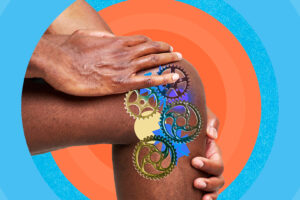With their smaller frames and thinner bones women are already more at risk for osteoporosis and bone fracture than men. And as women enter menopause, sharp drops in estrogen increase those odds. In fact, 80% of the 10 million Americans who are diagnosed with osteoporosis are women and one in two women over the age of 50 will suffer from a fracture as a result.
The good news is that even if you have been diagnosed with osteopenia, a precursor to osteoporosis, or osteoporosis itself, it is still possible to slow the progression or, in some cases reverse, the disease.
After all, it isn’t just about treating bone density, it’s about preventing bone fracture.
Identify Risk for Fracture Early
Recognizing your own risk of osteoporosis early is key to ensuring that you have a plan in place to keep your bones strong and fracture-free.
- Bone Density Tests (DEXA Scan). As women approach menopause, estrogen starts to drop. Low levels of estrogen, a hormone that protects bones, can lead to bone loss. So, it’s important for women to speak to their doctor about getting a baseline DEXA scan as they approach menopause to monitor bone loss and take action, if needed. A DEXA scan is a noninvasive test that looks at bones in a small area of the hip and back to determine their strength. But while bone density testing is important, it is just one piece of the risk fracture puzzle.
- Know your family history. Since bone development is hereditary, report any history of fractures in your mother or sister(s).
- Know your medications. In general, many medications widely used for asthma and allergies, thyroid problems or seizures can weaken the bones. Document your medication use with your physician to determine whether any medications you’re taking are impacting the strength of your bones.
- Pay attention to your own medical history. Any history of bone fractures in your own body (even if you think they are insignificant) may suggest that there’s a bone density issue. Be sure to mention a history of fractures to your doctor.
Strengthening Bones to Prevent Fracture
But if you’ve already been diagnosed with osteopenia or osteoporosis, you can reduce the risk of bone fracture and thereby slow the progression (or even reverse the effects) by:
- Finding balance. Physical therapy programs like Centrastate’s Posture for Life focus on improving your posture and making your muscles stronger.
- Exercising. Moderate exercise or weightlifting that puts stress on the bones will increase the bone mass and produce more bone density. It’s important, however, to consult your physician to discuss the right program for you as certain activities can increase risk of fracture.
- Using the right medications. Your doctor will work with you to determine whether any medication is needed to slow down the breakdown of the bone further.
- Focusing on your vision. As vision tends to weaken with age, the chance of falls become greater. Stay on top of your eye care and look for opportunities to keep your space free of tripping hazards.
- Adding Calcium plus “D” to your daily regimen. Especially now as the pandemic is keeping more people indoors, Vitamin D is a must-have for keeping bones healthy and strong. And when combined with calcium supplements, Vitamin D can help women build bone strength after menopause.
- Committing to lifestyle changes. Smoking and alcohol use weakens the bones. By changing these habits, you can slow the progression of osteoporosis.
While there is no single cure for osteoporosis, combining early intervention with medication and concentrated efforts to prevent fractures offers a clear-cut path for getting ahead of bone density issues.
Dr. Mutahir Abidi is the director of Arthritis Center at Centrastate Medical Center. He also specializes in the diagnoses and treatment of osteoporosis.





